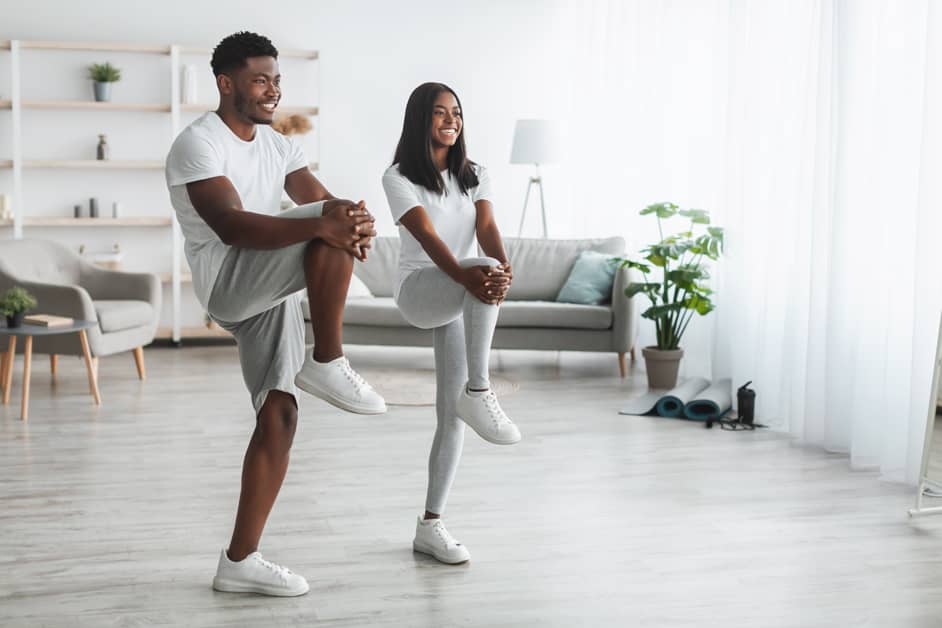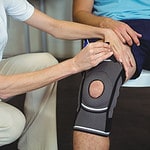Introduction
Hiking and trekking outdoors can be great for admiring nature and getting exercise. But without taking proper care after activity, you can end up with sore knees and other pains. Cooling down isn’t just about ending activity gradually – it’s also about implementing post-activity strategies like stretching and foam rolling. This helps you recover quickly, prevents lactic acid buildup, reduces inflammation and stops muscle cramps or pain.
Drinking enough water and electrolytes during or after hiking is one way to cool your knees. You can also self-massage with ice packs or compression clothing, and eat foods rich in antioxidants, proteins and complex carbs. Doing all this will ensure quicker recovery for your next adventure.
Reasons for cooling down your knees
Hiking and trekking can be great for staying healthy. But, not cooling down your knees after a tiring activity can lead to swelling and pain. That’s why it’s important to take extra steps for cooling them down. This article will explain the reasons why cooling down your knees is necessary.
Reduce inflammation
Cooling down your knees is important after hiking and trekking. Stress on joints can lead to inflammation and pain. Reduce inflammation with cold packs or ice wraps. These devices calm down inflamed tissues. Also, stretch to target the affected area. Compression bandages give support and compression. Finally, rest to let worn out muscles recover. This helps prevent long term damage.
Strengthen muscles
Strengthening the muscles around the knee joint is key in reducing knee pain and preventing injury. Weaker muscles can lead to extra strain on the kneecap, making it tough for someone to carry weight. Cooling your knees by exercising often strengthens the muscles in the area and decreases knee pain.
Exercises such as leg presses, squatting, leg extensions or toe raises are great for strengthening the kneecap and its surrounding muscles. Always use controlled movements when you do any of these exercises—sudden, jerky motions can cause damage. Before stretching or doing strength exercises, warm up your joints. This helps them get ready for activity and lowers the risk of injury.
Besides strengthening your muscles, incorporate balance training into your cool down routine. Good balance makes sure the knee is in the right alignment when you’re carrying weight and stops misalignment that could bring on knee pain. Activities like
- standing on one leg for different lengths of time
- yoga poses that improve core balance
may help avoid knee injuries due to incorrect posture or weak muscles.
Improve flexibility
Flexibility in your knees can reduce discomfort and pain. Stretching is a great way to improve flexibility and mobility, range of motion, and reduce stiffness.
Try:
- Standing quads: feet hip-width apart, hands on wall or chair for balance. Bend one knee, bringing heel towards buttock, hold for 15-30 seconds, switch legs.
- Kneeling lunge pose: kneel on floor, one foot stretched forward, both knees at 90 degree angles. Lean back through good posture until feeling strong stretch at back side of leg, hold for 10-15 seconds, switch legs.
- Seated toe touches: feet on yoga mat or towel, sitting up tall with good posture. Reach ahead as far as possible without straining other parts, feeling pull across shins and ankles, relax toes down towards floor.
Repeat this several times per day (10-20 reps) until desired goals are achieved.
Cooling Down Methods
Hike or trek finished? Cooling those knees is key! Stretching and tearing muscles more likely after strenuous activity. So, how do you cool them down? Here’s the scoop: Several methods to chill them out and reduce risk of injury. Let’s check ’em out!
Foam Rolling
Foam rolling is a must for hikers and trekkers. It helps release tension and make muscles more flexible. It stretches muscles, too, and releases adhesions, keeping them fit and healthy.
Pick foam roller equipment that fits your needs. There are 3 sizes: compact, medium, and extra-large. Start small and move to bigger sizes when you feel comfortable.
Put the foam roller under your body, from neck to toes. Do slow, consistent passes (15-20s) on the targeted area until you’re done. Repeat 3-5 times on each side. Don’t push too far if it hurts. For knee relief, use gentle pressure instead of rapid action.
These steps will help you recover after a trail and maintain stability in joints like your knees.
Stretching
Stretch! It relaxes muscles after a tough workout, and also boosts flexibility. Gently stretch the main muscle groups, like neck, arms, legs, chest, back, and butt. Hold each stretch for 15-30 secs. Push yourself, but not too hard. Remember to breathe: inhale deeply when you stretch, and exhale during the hold. Enjoy the relaxation boost!
Ice Therapy
Ice therapy is a method to reduce pain and inflammation. It helps to heal quicker and restore tissue health. Put a cold compress or bag of crushed ice on the affected area for no more than 30 minutes. Cover it with cloth or plastic wrap to avoid frostbite.
It constricts small blood vessels, lessening inflammation and swelling. It prevents pain signals from spreading too. It has an anesthetic effect when temperatures drop below 8°C/46°F. Temperatures commonly used are 15-20°C/59-68°F for injury rehabilitation and 7-10°C/45-50°F for acute injury management.
Be wary of cold burn risks and numbness. Ice therapy should be done slowly over longer periods and not short bursts with long breaks. Monitor temperature fluctuations.
Conclusion
Remember to cool down your knees after a hike or trek. Stretching and strengthening can help reduce muscle fatigue and soreness. Icing, massages, and other treatments can help reduce inflammation and acute pain. If you experience severe pain or swelling, talk to a doctor.
Proper care for your knees means you’ll be ready for any adventure!
Frequently Asked Questions
Q1: What is the importance of cooling down your knees after hiking and trekking?
A1: Cooling down your knees after hiking and trekking helps to reduce inflammation and soreness in the knees. This can help prevent further injury and ensure a quick recovery.
Q2: How should I cool down my knees after hiking and trekking?
A2: Cooling down your knees after hiking and trekking can be done by gently stretching the knees, applying an ice pack, or taking a warm bath. However, it is important to talk to a doctor to determine the best approach for your individual needs.
Q3: How often should I cool down my knees after hiking and trekking?
A3: It is important to cool down your knees after every hike or trek, as this will help to reduce the risk of injuries and soreness. It is also important to take regular breaks throughout a hike or trek in order to give your knees a chance to rest.





